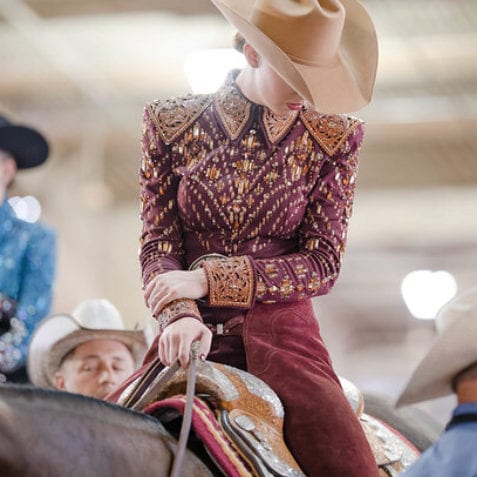When planning a show schedule for the upcoming year, many exhibitors ask themselves, “Do I try the large, competitive circuit that everyone’s been talking about”?
For many exhibitors, the thought of attending a massive, competitive show for the first time can seem an insurmountable challenge. Many shy away from trying this type of show out of fear of failure; they fear that stepping up to try a more challenging show will result in spending more money and not bringing home any blue ribbons.
Even if you are not quite ready to be bringing home blue ribbons, choosing to attend a large, competitive circuit for the first time can offer numerous benefits to the most novice of exhibitors.
Learn from Top Competitors
The next time you attend a massive circuit, use it as an opportunity to observe, study and learn from the best. Be sure to watch as many classes as you can and observe the top exhibitors in the country, including everything that they are doing to set themselves apart both in and out of the show pen.
Be sure to take video clips of poor, average and excellently executed patterns that can be stored and used for comparison later. Such as a football player reviews video in between games to improve their performance on the field, an equestrian can do the same to improve their performance in the show pen.
Leveled Classes
In 2012, the American Quarter Horse Association rolled out a program which provided “leveling” for classes to help bridge the gap between new and seasoned exhibitors. Many of the larger circuits include leveling for classes such as trail, western pleasure, horsemanship, western riding and hunter under saddle.
One of the many benefits of a large circuit is the availability of these classes, which offer exhibitors a less intimidating platform for showing. Level 2 classes are an attractive benefit to many, as they provide the less-experienced exhibitor the opportunity to test the waters of deep competition.
Set and Achieve New Goals
When setting goals for the year, many will say “winning a blue ribbon.” The truth is, winning is not a goal. Victory is the natural result of setting and achieving a goal – and for many, this is a result several years still in the making.
For those not ready to be winning blue ribbons, take the first step towards success by setting realistic goals for yourself and your horse. This may be as small as conquering your fear of tackling that first horsemanship pattern or nailing that first lead change with a green horse in the equitation pattern.
A large, competitive show can provide the perfect setting for achieving these realistic goals as well as measuring yourself against fierce competition.
Make It Work
Let’s face it, sacrifices must be made to be able to show horses. Spending time away from our jobs and our families, working extra jobs to afford it financially and always dealing with questions such as, “what do you mean, it costs you money to show?”, can sometimes make showing seem more like a task than a hobby.
Don’t let the challenge of doing what it takes to make it work, take away from the experience. Once you’ve made a choice and spent the money to attend a large circuit, don’t dwell on what it cost you to get there. Instead, take a breath and a minute to be grateful for the opportunity to compete.
Keep in mind all the extra effort that you’ve put in; the stalls cleaned, the hours worked overtime, the endless budgeting done to attend the shows which are the most affordable. Many would quit when it got tough, but you persevered and made it work – be proud of that.
Meet New People and Friends
A horse show is a breeding ground for jealousy, envy and misunderstandings due to the competitive nature of the sport. An intense expression due to extreme concentration and focus is often mistaken for rudeness, and frustration from a poor run or badly-behaved horse is easily mistaken for anger (at one’s friends or relatives).
This can be intimidating for the first-time exhibitor as many of their peers seem unfriendly and unapproachable. Remember that when caught moments before entering the show ring, most exhibitors are merely concentrating on the task at hand and only appear hostile. Many are open, friendly and more than willing to help those who are new to the sport.
***
Unfortunately, there is no “test” that can tell us if we’re ready to compete against the top competition. The only way to know if you are ready is to take a leap of faith and attend a show which forces you to compete against the best.
Remember the old saying – “You always miss 100 percent of the shots you don’t take.” Don’t make the mistake of staying out of the game because you are afraid to fail.
About the Author: A native of Northwest Pennsylvania, Kelli Hardy has been a lover of horses and all things AQHA for as long as she can remember. She graduated from Edinboro University with a BA in English literature and a minor in writing and is currently a high school English teacher at Erie First Christian Academy in Erie, PA. In her spare time, she shows AQHA in Amateur all-around events with her mare, Pretty Girls Rock.








